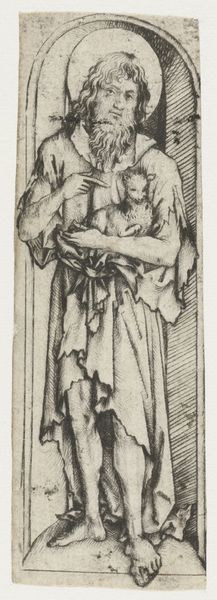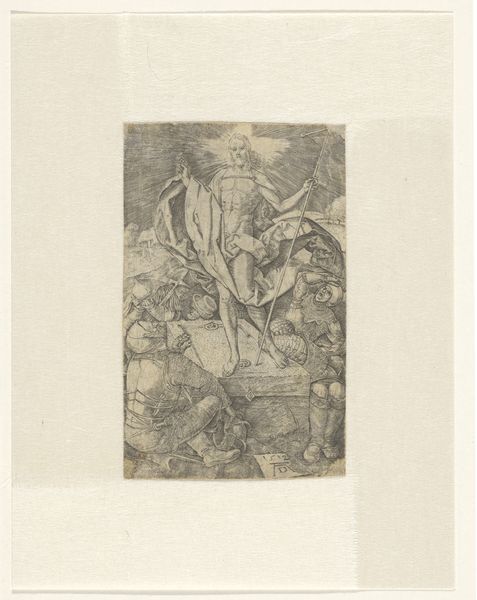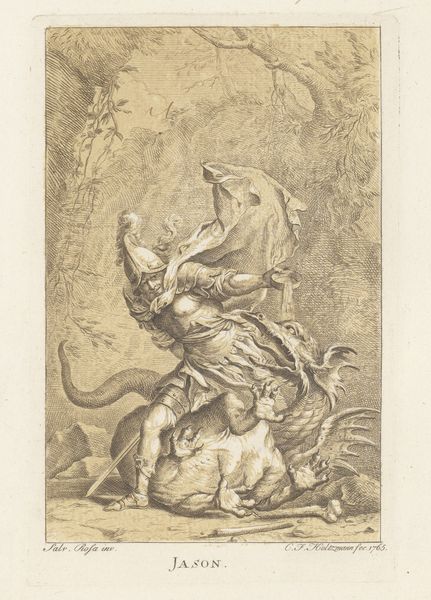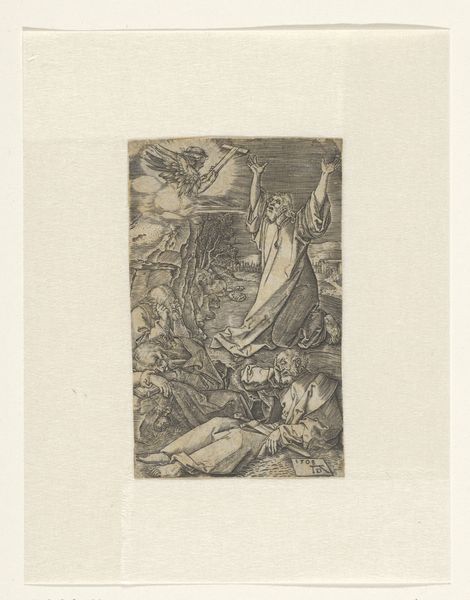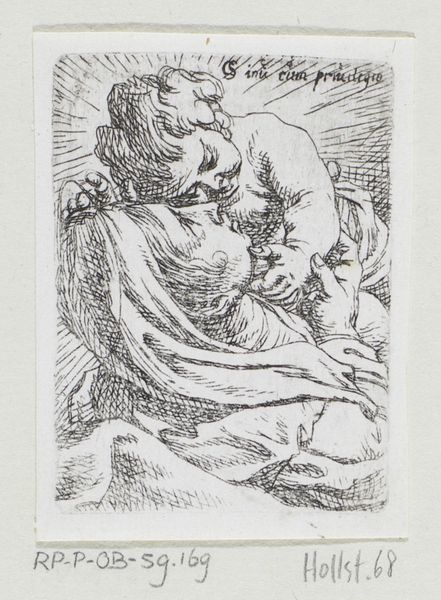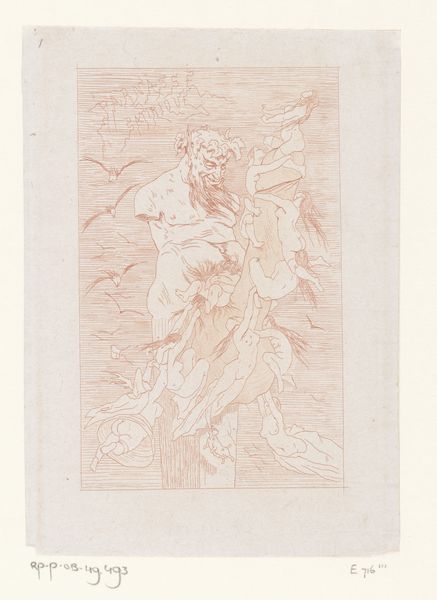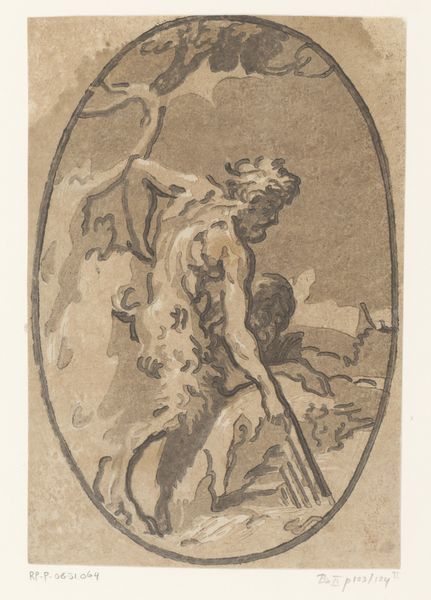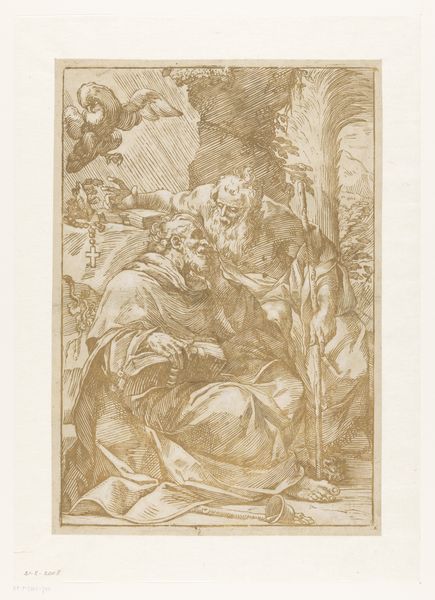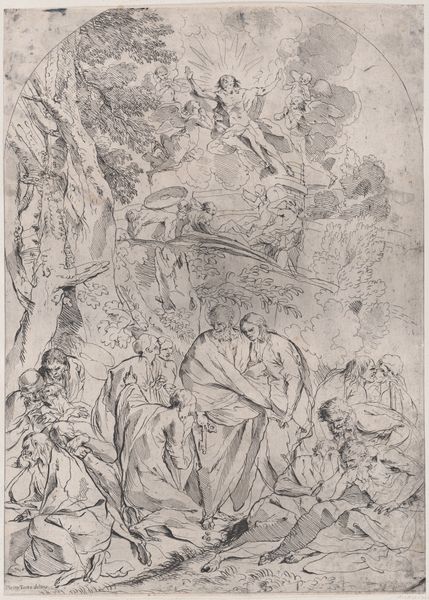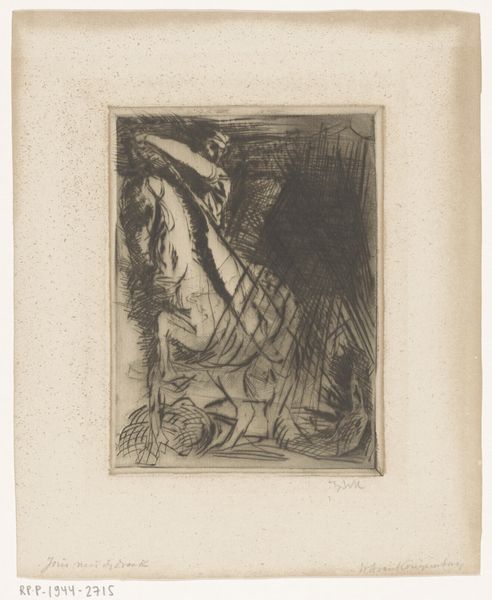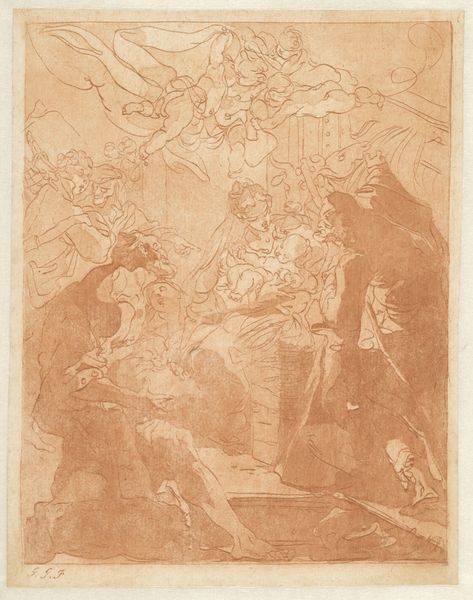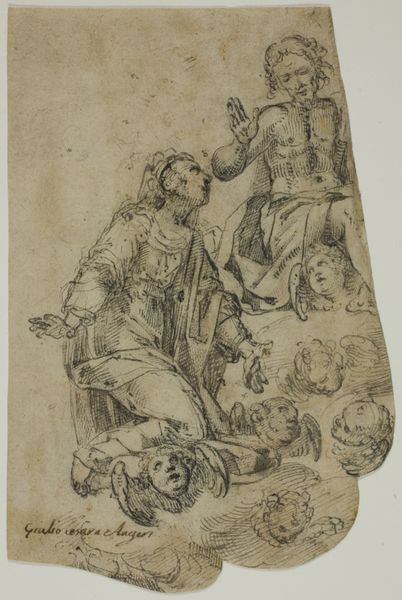
Dimensions: Sheet: 11 7/16 × 3 7/8 in. (29.1 × 9.8 cm)
Copyright: Public Domain
Curator: We're standing before "The Attributes of the Virgin," a work created around 1780 by Ramón Bayeu y Subías. It’s a compelling piece rendered through etching. What are your initial thoughts? Editor: The first impression is a lightness, almost an ethereal quality, created by the delicate lines and the triangular composition directing the eye upwards. There's a dreamlike floating quality. Curator: The baroque style immediately places it within a context of religious and historical allegories. It reflects the values and anxieties of 18th century Spanish society— the etching portrays the Virgin Mary amidst symbolic elements which, for viewers of that era, would resonate deeply. The symbolism itself provides a visual vocabulary of purity, divinity, and royal grace. Editor: The structural design is striking, isn't it? How the ascending figures create a powerful sense of upward movement, guiding the gaze and seemingly defying the constraints of the material, lifting it upwards toward transcendence. There is a visual hierarchy that lends itself to a semiotic reading, in terms of power, ascension and iconography. Curator: Indeed. Consider how representations of the Virgin are never just aesthetic choices. They are heavily coded projections onto female identity. During this period, the iconography associated with the Virgin, promoted certain aspects of womanhood—her obedience and moral authority became societal benchmarks to which women of the time were expected to conform. Editor: While I see that connection, it is the overall formal arrangement— the way light interacts with the lines, creating volume and depth—that is fascinating. Notice how each section is almost self-contained, yet flows smoothly into the next? Curator: Viewed through today’s intersectional lens, these images highlight the complexities inherent in idealized representations. The cultural and historical contexts significantly shape our reception to, and the intended purposes of, artworks of the past, especially as these related to questions around gender, power, and faith. Editor: Regardless of the social narrative, the image is potent in its aesthetic and artistic structure, creating this amazing sensation of flight. Curator: Absolutely. I see these dialogues between art and context as opportunities to bridge historical understanding with contemporary perspectives. It challenges us to look critically at the narratives embedded within art. Editor: For me, this close formal reading reveals universal artistic approaches that express our human capacity for transcendence.
Comments
No comments
Be the first to comment and join the conversation on the ultimate creative platform.
